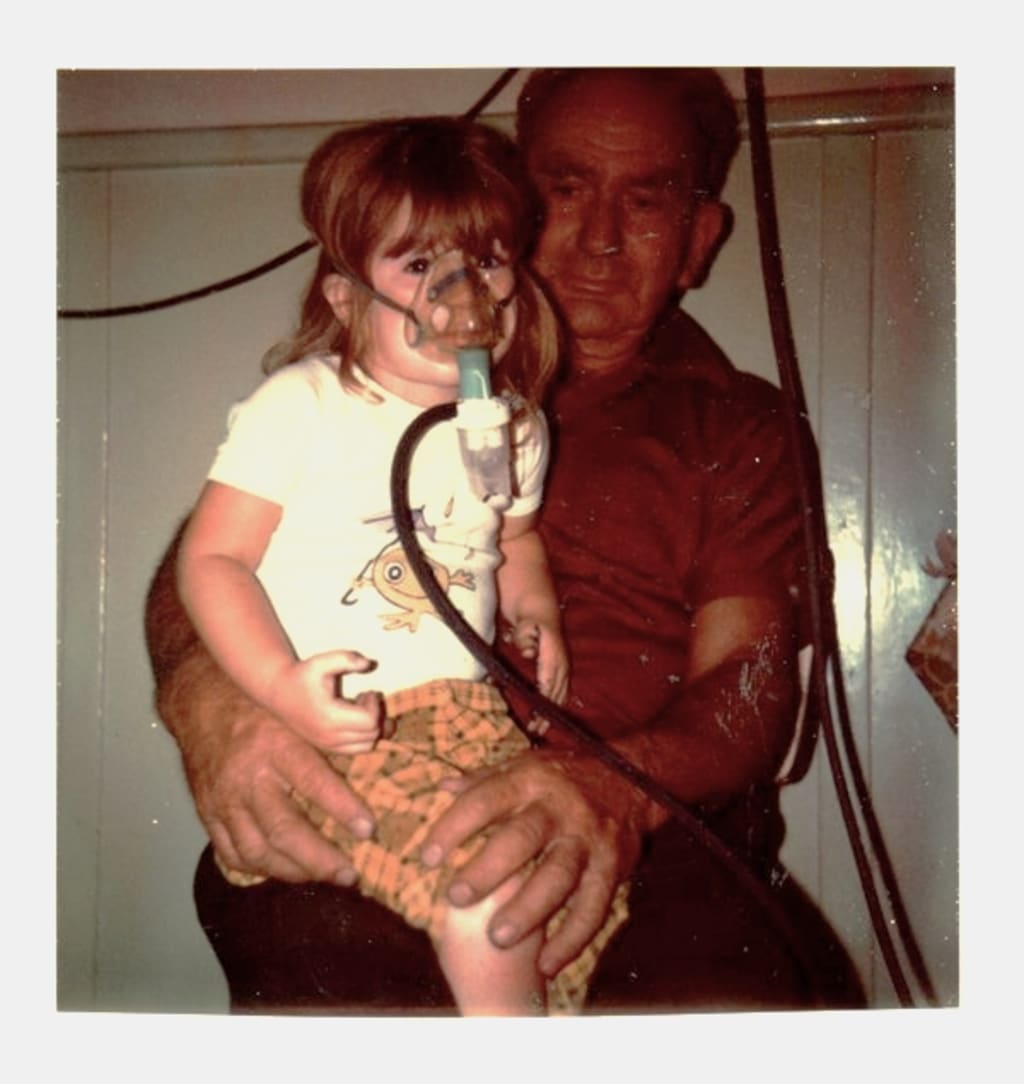"You're So Lucky You Have Mild CF" and 5 Other Myths About Cystic Fibrosis
From sweating to tune-ups and cures

"You're so lucky you have mild Cystic Fibrosis."
I've heard many variations and phrasings over the years. They all meant the same thing, how lucky I was that I "only" had mild CF.
Lucky?
I was lucky to have physio twice daily, add in a nebuliser or two, and a fistful of tablets. That's lucky?
There were nights and days I spent in constant pain. I coughed until my head pounded. My ribs felt bruised from the inside, and my back nearly seized. If that was lucky, I didn't feel it then, either.
The night I coughed up mouthful after mouthful of blood for hours on end. Was that when I was lucky?
And I sure didn't feel that lucky when I was in end-stage respiratory failure on oxygen waiting for new lungs.
So how does someone who is supposed to be "lucky to only have mild CF" end up in respiratory failure?
Simple. CF is a progressive disease. Like any progressive disease, it moves through stages. Mild, moderate, severe, followed by end-stage respiratory failure.
Everyone's journey is different.
Some people with CF stay in the mild stage for years with minimal intervention. Others work damn hard to keep their CF in a mild stage. Some people go through a steady decline, and others decline rapidly.
Until people with CF reach the end stage of the disease, it's easy to think luck is a component. You can't see the hours of work we put into health maintenance from the outside.
Myth Busting: CF only affects the lungs — it's just a bad cough
It's a seriously bad cough— but it's also so much more than that.
CF interferes with the production of mucus, sweat and digestive juices. Normally these fluids would be thin and slippery, acting as lubricants in the body. In people with CF, these secretions become thick and sticky. They clog organs and pathways within the body.
It's easy to blame all CF problems on the lungs. Coughing is visible and audible, making it forefront in people's minds.
Myth Busting: People with CF sweat more
I'm sure there are people with CF who sweat more - but that's not a CF thing. Some people sweat more for various reasons. People with CF do, however, sweat a lot more salt. Up to five times more salt, to be precise.
In summer, I can brush salt crystals off my skin.
An old wives tale references the salty skin of newborn babes with CF.
"Woe to that child which when kissed on the forehead tastes salty. He is bewitched and soon must die."
People skim and skip words when they read. So when you see the words "more", "salt", and "sweat", you can see where the myth originated.
Myth Busting: After a "tune-up", you're all better
Some of you are probably wondering what cars have to do with CF.
Let me explain.
When a lung infection gets out-of-control, a two-week course of IV antibiotics is the usual prescription. Commonly known as a "tune-up".
At best, we're going to get back to our baseline. Sometimes an infection is so nasty we might need longer than two weeks. Or a course of inhaled antibiotics afterwards. And sometimes IV antibiotics just don't cut the mustard, and we lose a little bit of lung function.
But let's work on the best-case scenario. Two weeks and we're back to our baseline. But we're never going to be "better". CF doesn't magically disappear.
Myth Busting: A lung transplant is a cure for CF
Eleven years ago, I upgraded my manky CF lungs.
While I don't have CF issues in my new lungs, they do come with their own challenges. A medicinal cocktail keeps my immune system from destroying these wonderful new lungs. But the cocktail is also toxic, giving me a range of other issues.
A transplant is a trade. I traded one set of health problems for another. With the bonus benefit of being able to keep on breathing.
A transplant is not a cure. And I still have CF - from salty sweat to malabsorption and dodgy sinuses.
Myth Busting: It's a childhood disease — people with CF don't live long
My mother was told there was a 50% chance I would live to see my thirteenth birthday. It was a generous assessment in the early '70s when the median survival age for children with CF was seven.
A few years ago, Western Australia reached a milestone. There are now more adults living with CF than children. It's the first time the dynamics changed.
If you google life-expectancy for CF, you'll get a variety of answers. For a long time, the magic number was thirty-seven. It's a number that changes with the development of new medications. Currently, for people with CF born in 2022, it's in their forties.
Medical research and new technologies don't happen in a bubble. They directly impact peoples' lives along the way. I'm still breathing because of research.

May is the national Cystic Fibrosis (CF) awareness month in Australia. Buy a rose for the virtual rose garden on Sixty Five Roses Day and help improve the lives of people living with Cystic Fibrosis.
Sandi Parsons is a Cystic Fibrosis Warrior who has defied statistics since 1972. She lives with her favorite husband and two problem puppies. Her superpower is the ability to swallow twenty-seven tablets at once.
About the Creator
Sandi Parsons
Sandi Parsons lives and breathes stories as a reader, writer, and storyteller. Subscribe to my newsletter & receive my free ebook The Last Walk → https://bit.ly/3cGvsPB






Comments
There are no comments for this story
Be the first to respond and start the conversation.